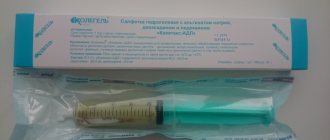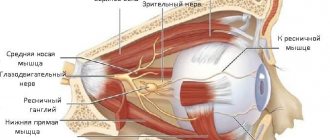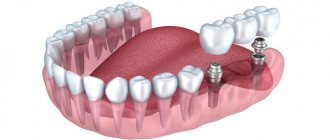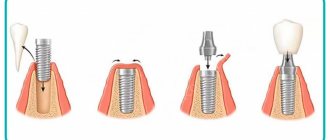What is local anesthesia
The main distinguishing feature of local anesthesia is that the person remains conscious during its effect. This type of anesthesia acts on receptors that are located below chest level. In addition to complete anesthesia, local anesthesia eliminates other tactile sensations, including temperature, pressure on tissue, or stretching.
Local anesthesia is possible in the following areas:
- on the surface of the mucous membranes of various organs - trachea, larynx, bladder, bronchi, and so on;
- in the thickness of tissue - bone, muscle or soft;
- in the direction of the nerve root extending beyond the boundaries of the spinal cord membrane.
- in impulse-conducting nerve cells of the spinal cord.
The main goal of local anesthesia is to block the occurrence of impulses and their transmission while maintaining consciousness.
Intravenous anesthesia
This type of anesthesia refers to non-inhalation types of anesthesia, which are characterized by a long-lasting effect and a greater depth of effect compared to inhalation anesthesia. Intravenous anesthesia can be performed using the following drugs:
- Thiopental, Recofol, Oxybutyrate and Propofol - classic pain relief
- Fentathyl with diphenhydramine - neuroleptanalgesia, which can be carried out on spontaneous breathing or combined with artificial ventilation
- Sibazon with Fentathyl is ataralgesia, which provides superficial, gentle anesthesia and can be carried out with other types of anesthesia.
This type of anesthesia is used to remove abscesses and phlegmons that occur with complications; it is also possible to treat small benign tumors if their removal under general anesthesia is not possible.
Types of local anesthesia
In medicine, there are the following types of anesthesia, differing in some characteristics and scope of application:
- terminal;
- infiltration;
- regional;
- intravascular.
Each type has a list of indications and contraindications that must be taken into account when conducting them.
Terminal anesthesia
This type is also known as topical or surface anesthesia. The main areas of application are dentistry, gastroenterology and proctology. Terminal local anesthesia (anesthesia) differs from other types in the method of administration: anesthetics in the form of a spray, gel or ointment are applied to the surface of the skin or mucous membranes.
In proctology, local anesthetic gels and sprays (Katetdzhel, Lidochlor, Lidocaine, etc.) are used during proctological examinations and diagnostic procedures: rectal examination, anoscopy, sigmoidoscopy. The examination becomes virtually painless. Also, local anesthesia in proctologists is used during certain medical procedures: latex ligation of hemorrhoids, sclerotherapy of hemorrhoids, infrared coagulation of internal hemorrhoids, as well as biopsy from the rectum.
Infiltration anesthesia
It is used in dentistry and surgery, and involves the introduction of special solutions into soft tissues. The result of the procedure, in addition to a pronounced anesthetic effect, is an increase in pressure in the tissues, and, as a result, a narrowing of the blood vessels in them.
Regional anesthesia
This type involves the introduction of an anesthetic near large nerve fibers and their plexuses, resulting in pain relief in localized areas. It is divided into the following types of local anesthesia:
- conduction, with the introduction of drugs near the trunk of a peripheral nerve or nerve plexus;
- spinal, with the introduction of drugs into the space between the membranes of the spinal cord and “turns off” pain receptors over a large area of the body;
- epidural anesthesia, with the introduction of drugs into the space between the spinal cord and the walls of the spinal canal through a special catheter.
Intravascular anesthesia
It is used mainly for surgical interventions on the extremities. Administration of drugs is possible only with the application of a hemostatic tourniquet. The anesthetic is injected into a blood vessel located near the nerve responsible for the sensitivity of the limb in the area below the injection site.
In recent years, due to the emergence of more effective local anesthetics, the number of proctological operations performed using local anesthetics has increased significantly. In addition, our specialists have developed a method of combined anesthesia - a combination of local anesthesia and intravenous anesthesia. This significantly reduces the toxicity of general anesthesia and reduces the severity of pain in the postoperative period, which allows the patient to recover faster after surgery.
Most often, when performing proctological operations (hemorrhoidectomy, excision of anal fissures, small pararectal fistulas, rectal polyps), pararectal blockade, as well as spinal anesthesia, are used.
Indications and contraindications for topical anesthesia in dentistry
As already mentioned, pain relief using the application method occurs due to lubrication and application of the drug to the surface of the gums, thereby reducing the sensitivity of the nerve endings. Its duration of action is about ten minutes, which is sufficient for minor dental interventions on the oral mucosa, dental pulp and hard dental tissues.
Indications for the use of topical anesthesia:
- Anesthesia of the injection area before injection anesthesia in children and pain-sensitive patients;
- Removal of small areas of gum that have separated from the tooth (gingivectomy);
- Removal of mobile primary teeth in pediatric patients;
- Excision of the hood of wisdom teeth on the lower jaw;
- Extraction of highly mobile units in adult patients suffering from stage 4 periodontitis;
- Professional oral hygiene, in particular – removal of subgingival tartar;
- Therapeutic manipulations for periodontitis and stomatitis;
- Preparation of units for crowns or the process of trying them on.
Contraindications to the use of topical anesthesia:
- Acute form of diseases of the cardiovascular system;
- Recent heart attack or stroke;
- Individual intolerance to the drug;
- Inflammatory processes of the bladder and urethra in the acute phase, which can provoke serious pain and cause the spread of infection to other organs, including prostatitis and orchitis in men, as well as cystitis and urethritis; Pathological conditions of the endocrine system.
Pregnancy can be called a relative contraindication. On the one hand, applying the drug to the gum mucosa prevents its penetration into the general bloodstream and will not affect the development of the fetus. On the other hand, the influence of modern gels or pastes for application of pain relief on the process of pregnancy has not yet been studied. Therefore, it should be used only in extreme cases.
Preparations for local anesthesia
The following drugs are used to provide local anesthesia:
- Novocaine;
- Dicaine;
- Lidocaine;
- Trimecaine;
- Bupivacaine;
- Naropin;
- Ultracaine.
Each of them is effective when carrying out a certain type of anesthesia. Thus, Novocaine Dicaine and Lidocaine are more often used when it is necessary to anesthetize the skin and mucous membranes, while more powerful drugs, such as Naropin and Bupivacaine, are used for spinal and epidural anesthesia.
Principles of anesthesia in ophthalmology
Anesthesia in ophthalmology is used not only for pain relief; along with this, it solves several other problems and performs certain functions. Among them:
- Complete immobilization of the eyeball.
- Ensuring stable normal intraocular pressure.
- Blocking the flow of moisture to the eye through the tear ducts.
When choosing a method of pain relief in ophthalmology, the age of the patients must be taken into account. As a rule, these are elderly and elderly people who, in addition to eye diseases, also have some systemic diseases that require certain conditions.
Indications for local anesthesia
All methods of local anesthesia have the same list of indications, and are used if necessary to numb a specific area for a short time (up to an hour and a half). It is recommended to use them:
- for performing surgical non-abdominal interventions or small abdominal operations, the duration of which does not exceed 60-90 minutes;
- with intolerance to general anesthesia;
- if the patient is in a weakened state;
- if it is necessary to carry out diagnostic procedures against the background of severe pain;
- if the patient refuses general anesthesia;
- in elderly patients;
- when general anesthesia cannot be used.
Features of local application anesthesia in dentistry
If the dentist uses the drug for the first time, testing for individual intolerance is required. Procedure steps:
- Antiseptic treatment of the patient's oral cavity;
- Isolation of the treated area of the oral cavity with cotton rolls or rubber dam;
- Removing saliva from it;
- The method of applying the drug varies depending on the form of its release (the solution is applied using a cotton swab or gauze ball, an aerosol is sprayed, a gel or paste is applied to the mucous membrane in a thin layer);
- The drug is left for a period of one to five minutes, excluding its contact with saliva;
- Before proceeding with dental procedures, all its remains are removed and sensitivity is checked using a special probe;
- If the anesthesia effect is not enough, the procedure is repeated following all the steps described above.
Possible complications when using local anesthesia
The use of local anesthetics carries certain risks, which include several types of complications:
- damage to the central nervous system and conduction system of the heart;
- damage to spinal tissue, nerve roots and spinal cord membranes;
- suppuration at the site of anesthetic injection;
- allergic reactions.
In most cases, the listed problems arise when the anesthesia technique is violated, or when the anamnesis is not collected completely.
What ophthalmic surgeries require anesthesia?
The choice of anesthesia is directly related to the volume of the planned intervention. Anesthesia is used for almost all types of ophthalmological operations. These include: extraocular, intraocular and mixed interventions.
- Extraocular surgeries include tear duct interventions and strabismus correction surgeries.
- Intraocular interventions include cataract surgery and retinal surgery.
- Antiglaucomatous interventions and drainage of the eyeball are considered to be mixed operations.
Anesthesia is also used during operations for eye injuries. The volume of intervention determines the amount of damaged tissue of the organ of vision.











